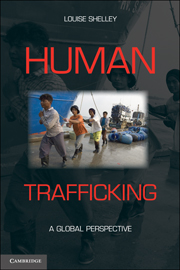1 - Why Has Human Trafficking Flourished?
Published online by Cambridge University Press: 05 June 2012
Summary
Numerous root causes have been identified for the existence of human trafficking. They include lack of employment opportunities, poverty, economic imbalances among regions of the world, corruption, decline of border controls, gender and ethnic discrimination, and political instability and conflict. These push factors are contrasted with the pull factors of demand for workers, the possibilities of higher standards of living, and the perceptions of many in poor communities that better opportunities exist in larger cities or abroad. Yet most of these conditions have existed for a very long time. They alone do not explain the phenomenal growth of human trafficking since the mid-1980s.
Trafficking has increased dramatically with globalization, the rise of illicit trade, and the end of the Cold War. Free markets, free trade, greater economic competition, and a decline in state intervention in the economy have been hallmarks of the globalizing process. Globalization is also characterized by greater mobility of goods and people and more rapid communications. Remote parts of the world are now integrated into the global economy. Yet controls on entrance to the most affluent countries create barriers for those who seek to migrate. This is highly criminogenic because the limitations on labor clash with the demands of a global economy. Many seek illicit means to enter countries where there is demand for labor.
- Type
- Chapter
- Information
- Human TraffickingA Global Perspective, pp. 37 - 58Publisher: Cambridge University PressPrint publication year: 2010



